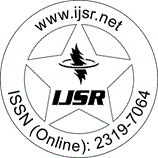Downloads: 1
India | Ayurveda | Volume 14 Issue 10, October 2025 | Pages: 1676 - 1680
Swasthavritta: An Ayurvedic Perspective on Public Health and Preventive Medicine
Abstract: Ayurveda, one of the world?s most ancient and comprehensive medical sciences, envisions health as a balanced state of body, mind, and spirit. It not only focuses on individual well-being but also addresses community health through preventive and promotive measures. In the present era, the social and economic burden of diseases is rapidly increasing, affecting not only individuals but also the overall productivity and economy of nations due to escalating healthcare costs. In this context, the Ayurvedic approach provides distinct advantages by addressing both personal and social dimensions of health. Swasthavritta, a fundamental branch of Ayurveda, represents the science of health promotion and disease prevention. It encompasses guidelines for daily and seasonal regimens, ethical conduct, mental well-being and environmental harmony ? all aimed at maintaining health and preventing disease. Ayurveda emphasizes disciplined living, balanced diet, proper hygiene and moral behaviour as essential tools for sustaining physical, mental, and social harmony. The classical texts of Ayurveda also contain profound insights on concepts like immunity (Vyadhikshamatva), nutrition (Ahara Vidhi), and communicable diseases (Aupasargika Rogas), reflecting an early understanding of public health principles. Thus, Swasthavritta stands as the cornerstone of Ayurvedic preventive medicine, integrating personal discipline with societal welfare for holistic health maintenance.
Keywords: Ayurveda as a holistic science, Rising burden of disease, Ayurveda's unique advantage, Swasthavritta ? the science of health promotion, Principles of public health in classical texts, Integration of personal and social well-being, Overall essence
How to Cite?: Dr. Babita Choudhary, "Swasthavritta: An Ayurvedic Perspective on Public Health and Preventive Medicine", Volume 14 Issue 10, October 2025, International Journal of Science and Research (IJSR), Pages: 1676-1680, https://www.ijsr.net/getabstract.php?paperid=SR251029103454, DOI: https://dx.doi.org/10.21275/SR251029103454
